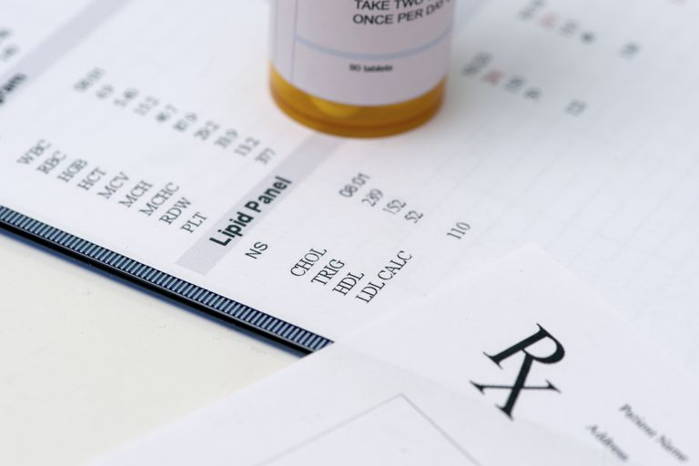LDL or low density lipoprotein is unquestionably a very powerful marker for the development of an atherosclerotic vascular event. LDL is directly involved in the atherosclerotic process and is felt to be directly toxic to the vascular endothelium.

LDL, at increased concentrations in the blood stream, enters the blood vessel wall and in the appropriate circumstances the LDL particle changes and becomes oxidized. Oxidized LDL is a major trigger of the Atherosclerotic process that ultimately culminates in plaque build up and obstruction of the blood vessel and all of the consequences thereafter.
What is Small Dense LDL?
All LDL is not created equal. There are different types of LDL. What has been clear is that all people with markedly elevated LDL do not get atherosclerotic vascular disease while other individuals with modest elevations in LDL get severe disease. This can be explained by the quality of the LDL particle. Small dense LDL is more atherogenic or more toxic to the endothelium. It is more likely to enter the vessel wall, become oxidized and trigger the atherosclerotic process. Small Dense LDL is a single type of LDL another type is large buoyant LDL. Large buoyant LDL is not as toxic to the blood vessel wall and much less prone to trigger the Atherosclerosis development.
What about weight loss?
LDL is an infamous subtype of cholesterol that travels through the body and increases the risks of developing atherosclerosis and other cardiovascular diseases. LDL consist of different subclasses of particles of varying densities and sizes which includes; small dense LDL and the large buoyant LDL. The former is known to be a key predisposing factor for cardiovascular diseases compared to the other subclasses. This is because they penetrate the arterial walls more easily and are quite susceptible to oxidation and glycation in the blood plasma
Based on a Greek article about Eco Slim on YgeiaKaiOmorfia.gr some of the most effective ways of reducing LDL is through proper dietary measures and weight loss exercises. Being overweight increases the bad cholesterol levels and lowers the heart-friendly cholesterol levels. More often, losing weight lowers total levels in the blood.
Research has also shown that, while losing weight with Eco Slim lowers your bad cholesterol levels; the process of burning stored body fats releases fatty acids into the bloodstream which could (to a lesser degree) increase the LDL cholesterol levels. This doesn’t, however, mean that people with higher amounts of body fats should stop exercising. A good way of losing weight should be formulated through proper dieting and doing the right exercises along with Eco Slim.
How is Small Dense LDL measured?
Determining whether small dense LDL is present can be done on both clinical grounds as well as in the laboratory. There are basically two types of assays involving blood samples to determine particle size or or the presents of small dense LDL. One is the Nuclear Magnetic Resonance (NMR) particle analysis and the other is the Gradient Gel electrophoresis. Both can separate the quality and quantity of the respective types of LDL.
What are the clinical predictors for the presence of Small Dense LDL?
Presence of Small dense LDL can be predicted by clinical parameters. Although not as accurate as laboratory assessment certain clinical factors predict the presence of Small Dense LDL to a reasonable degree of accuracy. These markers include diabetes, HDL below 35, and Triglycerides above 250 . In the presence of any one of the above there is about a 90% chance of small dense LDL is present.
What causes Small Dense LDL?
Causes of small dense LDL are multiple. There is a genetic pre-disposition to have small dense LDL. An atherogenic lifestyle involving minimal activity or exercise along with a typical American diet high in saturated fat is another cause. Insulin resistance or pre-diabetes is the last major cause of Small Dense LDL.
How is Small Dense LDL treated ?
There are multiple therapies that can effect small dense LDL. The goal of therapy is to shift small dense LDL to large buoyant LDL. Lifestyle is probably the most important means of treating small dense LDL, in particular an adequate exercise regimen associated with a diet restricting saturated fat. Simple weight loss can effect particle composition. Treatment of diabetes is also very important in the presence of Small Dense LDL and certain anti-diabetic medications are capable of this.
Certainly, but not all, cholesterol lowering drugs will promote a shift in particle composition. Cholesterol lowering drugs that impact small dense LDL are nicotinic acid and the fibric acid derivatives. Of note are the statin drugs–they do not effect particle composition but they do strongly effect the LDL concentration and the particle number. In combination with therapy to alter LDL composition, statin therapy to lower overall LDL concentration is felt to be a very powerful intervention in terms of lowering atherosclerosis risks and preventing atherosclerotic events.